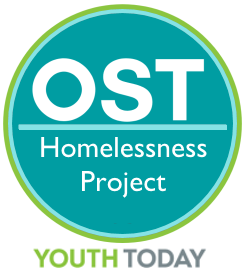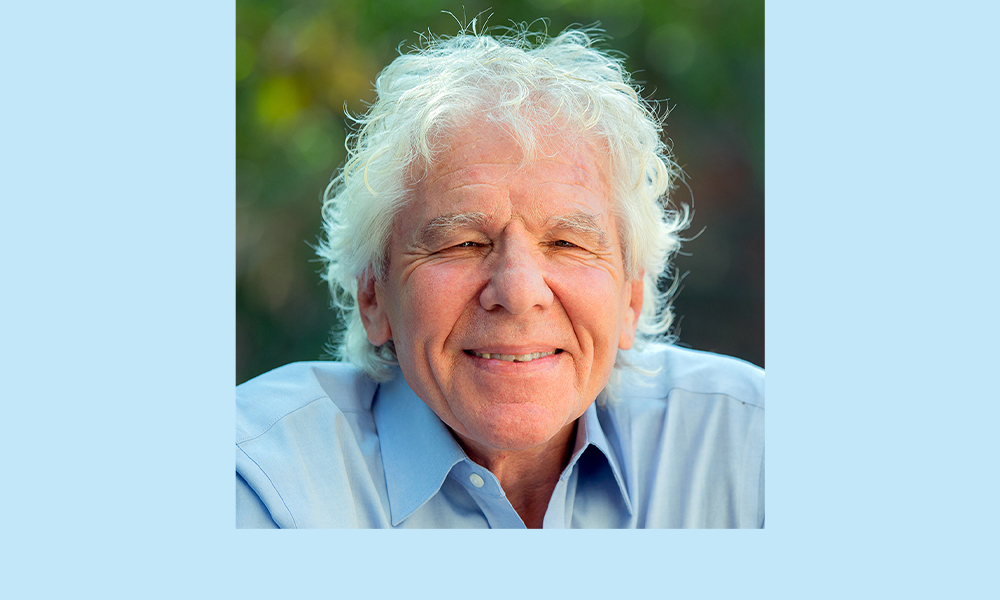SEATTLE — End youth homelessness. Achieve zero youth detention. Stop jailing runaways. Ensure kids don’t leave detention to end up homeless.
Washington state policymakers have made these sweeping promises in recent years regarding young people ensnared in homelessness, the juvenile justice system or both.
But how will we get there?
Psychologist Eric Trupin has some ideas, and they start with tackling the conditions that set the young on a path to justice system involvement.
 Trupin, a professor of psychiatry and behavioral sciences at the University of Washington Medical School, has worked with incarcerated youth for nearly 40 years. The vast majority, he says, have “something other than a problem with breaking the law.” They and their parents have trauma, learning challenges, emotional difficulties — all exacerbated by poverty and racial disparities.
Trupin, a professor of psychiatry and behavioral sciences at the University of Washington Medical School, has worked with incarcerated youth for nearly 40 years. The vast majority, he says, have “something other than a problem with breaking the law.” They and their parents have trauma, learning challenges, emotional difficulties — all exacerbated by poverty and racial disparities.
Unless we address those underlying factors, Trupin says, we can’t hope to push juvenile recidivism rates below the current 50% or reduce the over-representation of black and brown youth among both the homeless and incarcerated.
That’s why Trupin developed a program, now used widely in Washington and beyond, that provides intensive coaching for detained kids and their families. Called Family Integrated Transitions, the program has been shown to reduce felony recidivism by 30%.
The approach also teaches parents and adolescents to better manage their conflicts — a major cause of kids running away, getting kicked out and winding up homeless.
As King County prepares to open its controversial new juvenile detention center, Trupin sat down with reporter Allegra Abramo to talk about the links between youth incarceration and homelessness and how Washington can do better for its youth.
This interview has been condensed and edited for clarity.
The conversation
Allegra Abramo: Hundreds of young people in Washington wind up homeless after they leave detention, often because parents have thrown up their hands and said they can’t deal with it anymore. What happens to create that situation where youth are at risk of homelessness after detention?
Eric Trupin: Research demonstrates that [when] you remove a child from home and place them in a facility, it breaks the bond with family. It ends up making it that much harder for that child to reunite with his or her family, and leads to homelessness often, or increases the likelihood that a youth is going to have a hard time being accepted back within their family.
What we should be thinking about with a youth who’s in detention is … how we can recreate that bond and that relationship with their families? How can we figure out some transition back to the community?
We are making some strides in this area. King County’s FIRS program is a great example for youth who have been involved with domestic violence. It gives them time to be outside the home for a number of days and does really intentional, intense work trying to resolve some of the conflicts. Those examples are few and far between.
There are many programs that have demonstrated great effectiveness in reducing the likelihood of future incarceration. We don’t do them intensely enough, and the resources are way more heavily distributed towards detention.
Transition back to family crucial
Abramo: And one of the programs that has demonstrated effectiveness is the one that you developed, called Family Integrated Transitions. It’s used in a half-dozen counties and state juvenile detention facilities here in Washington, and now in other states, the United Kingdom and Norway. How does it work?
Trupin: Our counselors — we call them coaches — start working with a youth and their family two months before the youth is out.
Most of these kids have had challenges with regulating their emotions as well as experiencing trauma. We teach them all of these self-regulation kinds of strategies.
So the kid starts to see that she can control her thinking and thoughts more effectively. She doesn’t have to respond angrily in every circumstance. She can accept that things have happened to her that she can’t undo. The coach has worked very, very intensely on these kinds of issues, and there are very specific skills.
Parents get a therapist who is available 24/7, who comes to the house, accommodates their schedule. They teach the parent ways in which they can respond more affectionately. Give assignments to the parent about how they respond when there’s conflict. Teach them how to motivate a youth to follow a parole plan or be mindful around curfews, really detailed kinds of things.
And then the coach continues working with the youth and the family for four to six months after the youth transitions home.
State must reinvest in alternatives
Abramo: In state detention facilities, how many young people are able to do this program?
Trupin: Probably 50 or 60 in a year (out of about 1,000 kids a year who spend time in a juvenile rehabilitation facility).
Abramo: That’s a function of resources, not need.
Trupin: Definitely not need.
Abramo: The state has vowed to stop releasing youths from detention, foster care and inpatient mental health and substance abuse treatment into homelessness. How can we get there?
Trupin: Obviously that ethic is essential. How do we become strategic and effective in actually making that happen? Making it so it’s not just, “Jane has a place to go, we’ve set it up.” What is going to make it likely that she’ll stay there?
It’s so evident that the positive outcome is not a function of what happens in a facility. The positive outcome of sustaining kids [in] the community has to do with how we set up these transitions.
Abramo: Washington has been an outlier among states in detaining children for running away and other noncriminal status offenses that only apply to minors. State legislation passed this year will phase out the use of detention for status offenders. What do you think about that change?
Trupin: It was fabulous that it happened. But how are we going to make it work? In some cases it’s pretty straightforward, you just provide some services for these kids. But in some cases it’s going to be hard, where you have a kid who’s deeply into doing stuff that is dangerous and scary.
Not having the alternative of detaining these kids will allow us to really reinvest in alternatives. And we’ll come back to working with families, no doubt about it. Providing resources within the community. Coming up with ways that can be more effective and more humane than putting a kid in detention because she’s running away.
I don’t think it’s going to be easy, but I think it’s great.
Abramo: You provided King County with detailed recommendations for its new Children and Family Justice Center, which opens later this year. How is the county doing so far in following your recommendations?
Trupin: One of the primary recommendations I made in that report [is] that there are too many beds. Yesterday there were 50 youth in the facility. (The new facility will have 112 beds, down from the current 212.)
So how are we going to use that space to have an impact specifically on homelessness? Could we expand programs like FIRS for other kinds of problems or crimes that kids have committed?
I’m cautiously optimistic, but I’d like to see much more activity around [release] planning. There are still many youth who are in and out of that facility multiple times.
Abramo: There’s been a lot of opposition to the new youth justice center. People say if the county is serious about its goal of “zero youth detention,” it shouldn’t be building a new detention facility.
Trupin: It’s a great aspiration, but to the community, how could you be spending $230 million on a building, and saying at the same time you want zero detention? Engaging the community was not done effectively, at least that’s my take.
Abramo: You think advocates’ calls for “no new youth jail” are unrealistic?
Trupin: I do. I don’t think it’s realistic in a whole host of ways. There are young people — very few, we could reduce the number — who need to be somewhere for a period of time.
What would you do with this kid who won’t stay anywhere, has done something that has hurt somebody? And there are laws that you’ve got to follow. You’ve got to figure out something to do. Let’s make sure what we figure out is effective.
This article is part of a series by Youth Today on homelessness and its intersection with youth justice. It is made possible in part by support from the Park, Raikes and Tow foundations. Youth Today maintains editorial control.
































